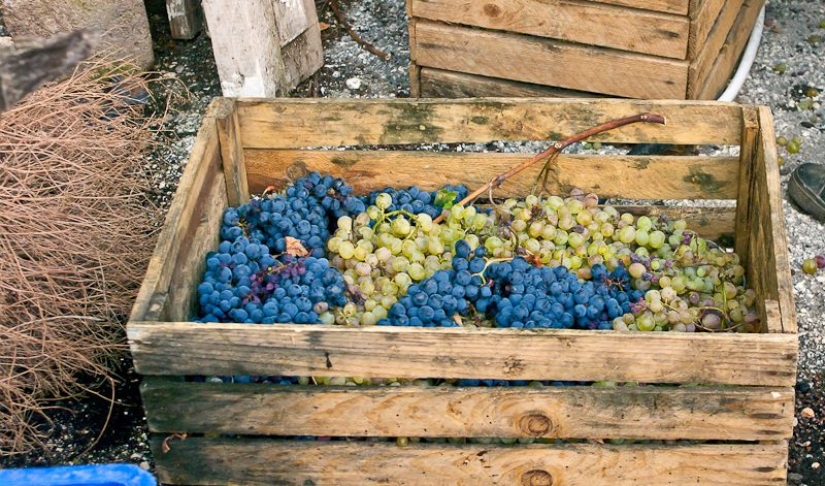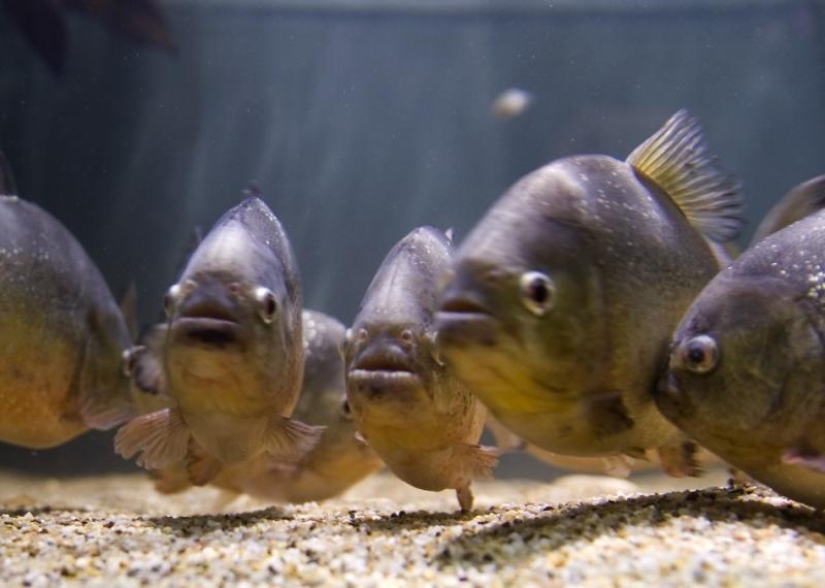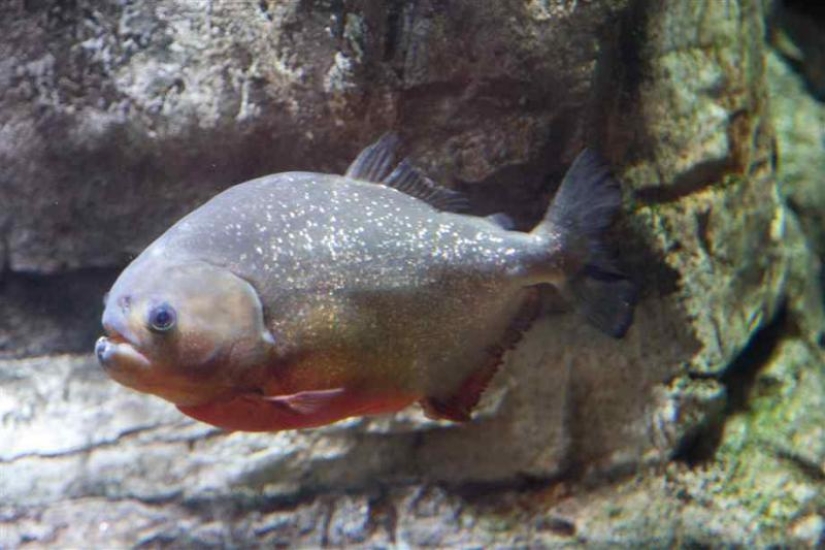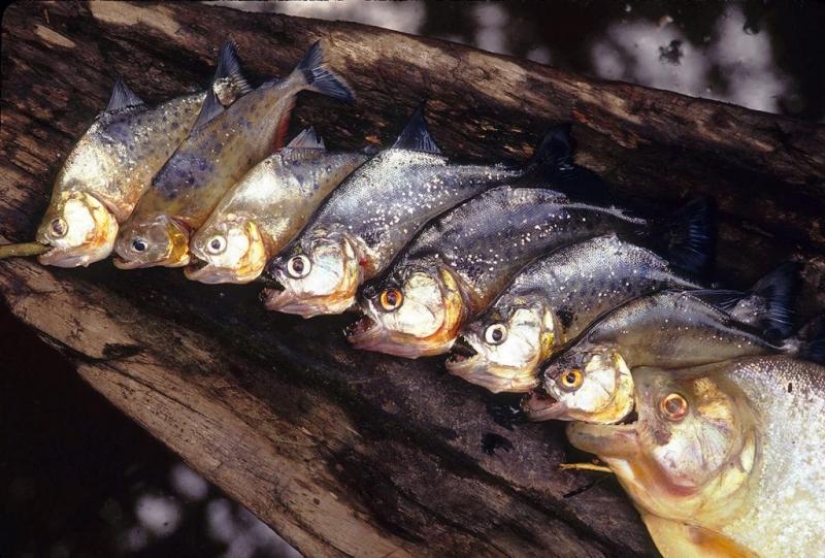What you need to Know about piranhas: Truth and Fiction
Categories: Animals | Nature | World
By Pictolic https://pictolic.com/article/what-you-need-to-know-about-piranhas-truth-and-fiction.htmlConfident that the underwater fauna, greedy for human flesh, is more common in movies than in reality, the modern inhabitant of the middle lane has long discarded the possibility of becoming a victim of a predator. But if you are brought to South America, you need to be prepared for anything.

A sharp-toothed piranha successfully fights an anaconda and a chupacabra for the honorary title of the most creepy creature in South America. There is some truth in the most fantastic stories, but in real life, the fish sung by Hollywood (even the young James Cameron, the author of the unforgettable "Terminator" and "Avatar", shot a movie about them) and occupying an important place in the creepy tales of the local population, turn out to be completely different.

Let's try to dispel the most common myths about this river predator and give some useful tips for those who bought tickets to Brazil or Mexico.
Everyone knows that piranhas live in the murky waters of the Amazon. And this is true, the diversity of species inhabiting this great river is extremely great. But it is worth knowing that the habitat of piranhas is very extensive, they can be found in almost any river of the South American continent.
At the same time, it will be news to many fans of horror films that some species of piranhas are herbivorous. And among the predatory species of this fish, only three or four can pose a danger to humans.

The main food of piranhas is carrion, and not at all tanned blondes in bikinis. If wolves are called orderlies of the forest, then with the same success toothy fish can be called orderlies of rivers. Any dead animal is completely gnawed by them and does not infect the water with cadaveric decomposition.

Not all types of piranhas are a "trifle" the size of a palm. Some grow up to almost half a meter in size. A common feature for the whole family of piranhas is the special structure of the jaws and the location of the teeth. The extremely sharp triangular teeth of these fish, when bitten, fit together so tightly that the predator does not bite off the victim's meat, but rather cuts it off.
The closest analogy is well–honed scissors or a zipper on clothes. Also, all piranhas have an instinctively coordinated "work" in the pack. When attacking, each fish makes a bite and immediately gives way to a "colleague". As a result, even large animals like tapirs are gnawed to the bone in record time.

A considerable surprise for fans of scary stories will be the fact that in the entire history of modern South America, not a single case of human death from the teeth of piranhas has been officially recorded. You can hear most of the terrible stories about the bloody outrages in the river waters from local fishermen. And fishermen, you know, tend to exaggerate a little and dramatize a little in any country and on any continent.
For example, upon closer examination of the high-profile tragedy of 1976 in Brazil, important details were revealed: then a bus full of passengers fell into a deep river, killing almost forty people. Their corpses were eaten by piranhas, and the press, quick to sensationalize, accused the predators of massacring people.
But a survey of the few survivors showed that getting out of the bus, they did not see any piranhas and, moreover, were not attacked by them. And the bus was brought to the surface only a few hours after the accident, with a high degree of probability, the traces of piranha bites found were already left on the corpses.

But do not neglect the set of these razor-sharp teeth. Piranha attacks on people without a fatal outcome happen with frightening regularity. In most cases, victims manage with a couple of painful bites, but there are many cases of piranha attacks that have caused serious injuries.
In 2013, more than 60 people, including seven children, were injured on a river beach in Argentina from a massive piranha attack. Many were taken to the hospital, and some of the victims had their fingers or toes bitten off. Biologists explained this attack by the unprecedented heat. To protect yourself from piranhas, indeed, you should monitor the weather and the change of seasons.
During the floods of the Amazon and other large rivers, the hunting grounds of piranhas expand significantly. Fish get food in abundance, largely due to the corpses of land animals caught by a sudden rise in the water level in those parts. And during the period of heat and drought, when large flocks of piranhas are trapped in the narrow banks of crushed rivers, none of the aborigines will have fun splashing in muddy water.

In accordance with the canon of the adventure genre, piranhas react vividly to blood. Life in the turbid streams of the Amazon has taught this species to rely primarily on the sense of smell, so they are able to smell blood in the water in a ratio of one to one and a half million. And there is nothing surprising in the fact that piranhas become more aggressive at the same time: absolutely all animals react to blood, even a harmless cow is capable of inappropriate actions at the sight of blood.

Very often, the victims of bites are those who hunt piranhas themselves. It's about fishermen. No, piranhas do not take revenge systematically on people with fishing rods. But taking a piranha off the hook, you can easily lose a finger. Even fish caught and thrown ashore can, on occasion, not weakly cling to the offender with their teeth.
But their meat is considered a delicacy, and daredevils, rejecting doubts, rush with gear to the shores of South American rivers. And a naive piranha pecks almost on a bare hook, it is only necessary to pull it in the water, imitating movement.
Recent articles

Reddit users gathered once and let's brag about who and what they treat in school canteens. Both the students themselves and their ...

What kind of wedding traditions do not happen! The Scots pour dirty slush over the bride, some peoples of India have decided to get ...

The winter sky sometimes presents phenomena that seem almost unreal. Pearlescent, or nacreous, clouds are rare guests in our ...